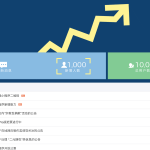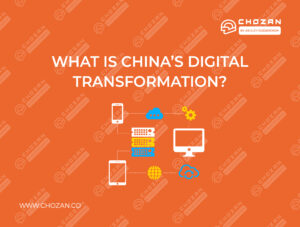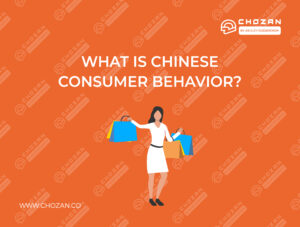WeChat Pay is an in-app payment feature that allows all WeChat users to pay for transactions quickly on their mobile phones. It’s fully optimised for online and offline businesses and it is expected to offer more opportunities in the near future. WeChat Pay can be used in 49 countries and regions around the world, and supports 16 currencies such as pound sterling, Hong Kong dollar, US dollar, Japanese yen, Canadian dollar, Australian dollar, euro, New Zealand dollar, South Korean won, etc.
In this article, we’ll mainly discuss WeChat Pay for mainland China, specifically for vendors based in mainland China who sell to mainland Chinese customers.

Source:AskCi.com
Understanding the payment habits of Chinese consumers and WeChat Pay is important for brands looking to enter the Chinese market. With the acceleration of digital transformation and changes in consumer habits, mobile payment has gradually become the mainstream payment mode in Chinese society.
According to the People’s Bank of China, China’s mobile payment transaction volume reached 556 trillion yuan last year and is expected to reach 715.34 trillion yuan in 2022. WeChat has nearly 1.3 billion monthly active users, making it the second largest mobile payment giant after Alipay, and WeChat Pay accounts for 39.53% of China’s mobile payment market share. Clearly, WeChat Pay has more user groups and greater frequency of use than other mobile payment systems.
6 ways to use WeChat Pay

Source: Wechat pay.com
1. Payment Code Payment
Payment via QRcode involves the user displaying a “payment code” in the WeChat wallet to be scanned by the merchant system which automatically completes the transaction. It is suitable for offline cashier scenarios such as supermarkets, convenience stores, restaurants, hospitals, schools, cinemas, and tourism. Scenic spots and other physical locations with distinct business addresses.
For example, when users make offline purchases, they can show the payment code (a bar code and a QR code) in their WeChat Wallet for vendors to scan. The payment will be processed automatically. Quick Pay is suitable for offline vendors such as supermarkets and convenience stores where payments are performed face to face with customers.
Below is an example of Quick Pay procedure (purchasing in a supermarket or convenience store):

How to activate the payment code function:
Merchants can enable this feature by default by selecting the offline merchant system when making a WeChat payment. For other merchants, if needed, they can apply for it via the merchant platform – product centre – payment code- and apply for activation.
 This function is only available for service accounts, corporate accounts and government/media subscription accounts
This function is only available for service accounts, corporate accounts and government/media subscription accounts
2. JSAPI Payment (offline, public account, PC website scenario)
JSAPI payment means that the merchant opens the WeChat payment module in the payment scene and calls the JSAPI interface provided by WeChat payment to complete the transaction.
JSAPI (Java Servlet Application Programming Interface) payment is mainly used in three scenarios:
Offline places: User scans the QR code and completes payment via WeChat browser using QR code generated by the interface.
Official account scenario: Enter the merchant’s official account in the WeChat official account, open the home page, and complete the payment
PC website scenario: User scans the QR code on the website and opens the page in the WeChat browser to complete the payment.
The following is an example of payment procedure for the official account scenario:

This function is only available for service accounts, corporate accounts and government/media subscription accounts.
3. WeChat Mini-program Payment
Small program payment means that the merchant realises the payment function in the WeChat applet platform by calling the WeChat Pay applet payment interface; the user opens the merchant assistant applet to place an order, enters the payment password, completes the payment, and then returns to the merchant applet.
For example, if a user is shopping on an external e-commerce platform app on a mobile device, they can choose to pay via WeChat on the payment page.
The activation method for merchants is that when they settle in, the system activates this function by default. After settling in, additional merchants can proceed to Merchant Platform-Product Center-Mini Program Payment-Apply for activation. It is worth noting that the WeChat red envelope function can be used for free in the applet.
Here is an example of using WeChat Pay in a merchant applet:

This function is only available for service accounts, corporate accounts and government/media subscription accounts.
4. Native Pay (PC websites, physical stores, media advertising)
Native payment refers to the mode in which the merchant system generates a payment QR code according to the WeChat payment agreement, and the user then uses WeChat to “scan” to complete the payment. This mode is suitable for scenarios such as PC website, physical store single product or order, and media advertisement payment.
Activation process:

This function is enabled by default in the merchant system when visiting the PC website scene. In case other merchants need it, they can go to Merchant Platform – Product Center – Native Payment – Apply for activation.
5. APP Payment
It means to complete the payment by opening the WeChat payment module in the mobile application APP. It is suitable for the scenario of integrating WeChat payment function in the mobile APP. The user will navigate from the APP page to WeChat to make the payment, then return to the merchant APP to display the payment result. The specific operation procedure is as follow:

This function is only available for service accounts, corporate accounts and government/media subscription accounts.
6. Facial recognition payment
Face payment is currently the latest payment method on WeChat, with an accurate recognition rate of over 99%, and the usage rate is still increasing. Face payment is a safe and convenient payment method for users to use the camera to swipe their face and identify their identity before a face scanning device. Applicable to a wide range of offline physical places, such as supermarkets, restaurants, convenience stores, hospitals, schools, etc. The specific operation process is as follows:

This function is only available for service accounts, corporate accounts and government/media subscription accounts.
Conclusion
Finally, it’s important to note that WeChat charges a commission to merchants who use WeChat. The settlement interval (T+1/3/7) and commission rate (ranging from 0.10% to 1.00%) vary from industry to industry, but most charge 0.60% with settlement interval of T+1. Click here to view the details of WeChat Pay commission.
Do you find WeChat Pay helpful? Will you plan to use WeChat Pay? Contact us here and we’d be happy to answer any questions you may have.
To get deeper insights into Chinese social media marketing and utilizing it to serve your business, join ChoZan, a training and resources platform for Chinese social media marketers.
Read more related posts
-
A Brief Introduction to WeChat Pay
WeChat Pay is an in-app payment feature that allows all WeChat users to pay for transactions quickly on their mobile phones. It’s fully optimised for online and offline businesses and…
-
What are WeChat Mini Programs?
WeChat mini programs achieved over 450 million daily active users in 2021. Their cloud-based ecosystem now comprises more than 3 million of these mini programs. In-person order taking and paper…
-
How to Sell on WeChat?
With more than 889 million monthly active users and 200 million of them linking their WeChat account to bank cards, there’s no doubt that WeChat is a major player in…
-
10 Ways to Boost Followers on WeChat
With around 846 million monthly active users, WeChat is an outstanding marketing tool for brands in China. An official WeChat account is a great way to get closer to customers,…








